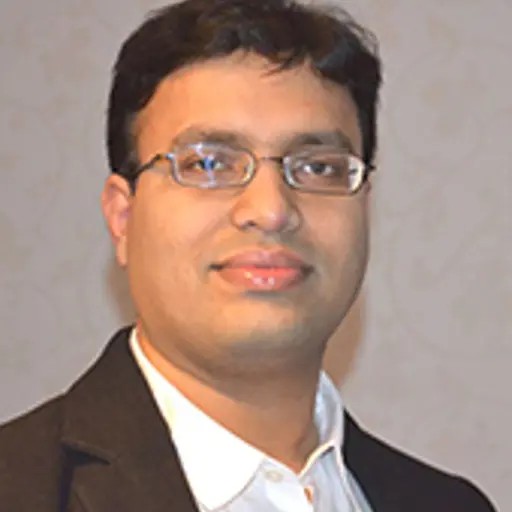Welcome to the workshop "Spin and quantum science and technologies"
Overview
- Date:Starts 26 November 2025, 08:30Ends 26 November 2025, 17:00
- Location:
- Language:English
- Last sign up date:16 November 2025
When | |
|---|---|
| 08.30 | Registration and coffee. Put up your posters |
| 08.55 | Opening of the workshop |
| 09.00 |
Pablo Jarillo-Herrero, MIT The understanding of strongly-interacting quantum matter has challenged physicists for decades. The discovery seven years ago of correlated phases and superconductivity in magic angle twisted bilayer graphene has led to the emergence of a new materials platform to investigate strongly interacting physics, namely moiré quantum matter. These systems exhibit a plethora of quantum phases, such as correlated insulators, superconductivity, magnetism, ferroelectricity, and more. In this talk I will review some of the recent advances in the field, focusing on the newest generation of moiré quantum systems, where correlated physics, superconductivity, and other fascinating phases can be studied with unprecedented tunability. |
| 09.40 |
Annica Black-Schaffer, Uppsala University Magnetism and superconductivity are two of the most celebrated quantum phases of matter and usually have a ‘friend-foe’ dichotomous relation. Combining superconductivity with altermagnetism turns out to open for new exceptional possibilities. In this talk I will show several novel effects occurring when superconductivity appears in altermagnets, including finite momentum pairing, field-induced superconductivity, and a perfect superconducting diode effect, as well as establish constraints on the superconducting pairing. If time permits, I will also demonstrate the possibility for orbital-selective altermagnetism in the unconventional superconductor Sr2RuO4. |
| 10.20 | Coffee break / Poster Session |
| 11.00 |
Heike Riel, IBM Zurich Quantum computing is advancing rapidly, offering the potential to transform computational paradigms and tackle problems that are intractable for classical systems. Realizing practical quantum systems demands the development of an entirely new computing stack - from qubits and quantum processors to components, wiring and control electronics, transpilers, error handling, software, algorithms, and the compute architecture to integrate quantum and classical resources at scale. This presentation will provide an overview of the current state of quantum computing and outline the milestones on the path toward building a large-scale, fault-tolerant quantum computer by 2029. The significant improvements in hardware, software, and system integration, pushing the performance of quantum computing to reach quantum utility and advance toward quantum advantage, will be presented. Breakthroughs in error correction and a modular approach indicated in the IBM Quantum Roadmap outline a clear path to quantum systems using 200 logical qubits and 100 million quantum operations by 2029 and 2,000 logical qubits a few years later. |
| 11.40 | Lunch / Poster session |
| 13.00 |
Eiji Saitoh, University of Tokyo Electricity flows when electrons move, but each electron also carries a tiny magnetic moment called a spin. When these spins flow collectively without an accompanying charge current, we call it a spin current. This invisible yet real flow can transmit angular momentum and energy in ways that conventional charge currents never could. For many years, spin currents remained a purely theoretical idea, beyond experimental reach. The discovery of the inverse spin Hall effect changed that, allowing spin currents to be converted into measurable electric signals and opening a new window into the hidden dynamics of matter. Since then, the study of spin currents has evolved into a rich interdisciplinary field — linking magnetism, energy conversion, mechanical motion, and information processing — and continues to illuminate how the simple act of “spin flowing” can connect the fundamental and the functional in modern physics. |
| 13.40 |
Johan Åkerman, Gothenburg University Spin Hall nano-oscillators (SHNOs) are emerging as a compelling platform for oscillator-based computing, particularly for hardware Ising machines that rely on large, phase-coupled networks. A central challenge has been scaling synchronized SHNO arrays far beyond the tens-element limit of earlier demonstrations. I will discuss recent advances in engineering ultrasmall SHNOs with improved coherence and stronger mutual coupling, enabling mutually synchronized arrays of more than 100,000 oscillators and with a route toward networks in the tens-of-millions range. These large arrays enable us to explore collective nano-oscillator behavior at unprecedented scales and clarify how SHNOs might support scalable, energy-efficient implementations of Ising-type optimization and related spintronic computing concepts.
|
| 14.20 |
Naoya Shibata, University of Tokyo We have successfully developed the world’s first atomic-resolution, magnetic-field-free electron microscope, which enables the observation of electromagnetic fields inside materials and devices at the atomic scale. In this presentation, I will offer an overview of the unique features of this microscope and share representative examples of its applications. |
| 15.00 | Coffee break |
| 15.40 |
Tracy Northup, University of Innsbruck Can we prepare quantum-mechanical states of motion of macroscopic objects - for example, superposition states of massive objects where the distance scale of the superposition is as large as the object itself? Such states would allow us both to investigate fundamental questions about quantum mechanics and to build novel sensors and transducers. A levitated nanoparticle in ultra-high vacuum is a promising experimental system with which to investigate these questions. I will present experimental work with silica nanoparticles in ion traps in which we aim to bring these particles into the quantum regime. |
| 16.20 |
Göran Johansson, Chalmers University of Technology In this talk, I’ll touch on three aspects of quantum technology. First, the status of the superconducting quantum computer developed at the Wallenberg Center for Quantum Technology at Chalmers. Then, I’ll move on to an investigation of how protein structure and protein design could be explored on future quantum computers, as well as tests of these algorithms on current hardware. Finally, I’ll discuss a dynamical effect in waveguide quantum electrodynamics, where weakly driven atoms still collectively gets fully excited, generating large photon bunches.
|
| 17.00 | End of workshop |
